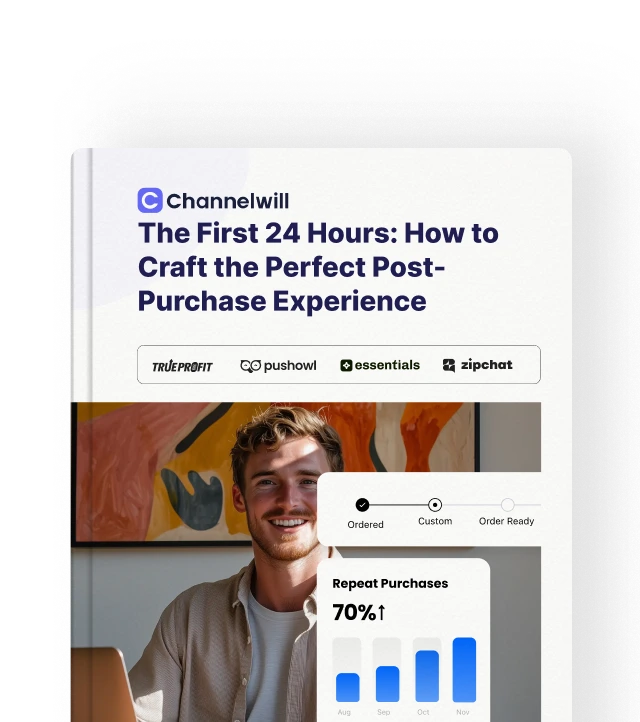Imagine waking up to a customer complaint about minor damage on their order? Your first instinct might be to issue a full refund or exchange. But the best solution is actually… a partial refund.
Partial refunds allow your customer to get a portion of their purchase price back. It solves most minor issues with Shopify orders. And saves your business from complete revenue loss.
But how does it work, when should you use it, and why is it better than a full refund? We’ll answer those questions in this article. We’ll also give you tips and how-tos so you can start using partial refunds to your advantage.
What Is a Partial Refund and When Is It Used?
A partial refund is when you give your customers some of their money back from the original payment price.
You usually give it if the item they received is damaged, used, or missing any parts. It’s also usable if there’s a delay in the delivery.
Remember that a partial refund doesn’t always mean 50%. It could be 5%, 20%, 65%, or a certain dollar amount as long as it’s less than the full price.
Imagine you owned a pet supply store. You sold treats, toys, vitamins, and other products for dogs and cats. One of your customers, Mae, bought three different toys and two Milk-Bone snacks for her dog. Everything came on time and was in good condition, except for one toy.
Mae called and asked if she could get a refund for that. You checked the damage (and it was not that serious), so you decided to give her a 20% refund for that item.
Partial Refund vs. Full Refund vs. Returns
Here’s a quick comparison of the three:
- Partial refund: Your customer gets some money back and keeps the item
- Full refund: Your customer gets all the money back (sometimes they return the item, sometimes not)
- Return: Customer sends the item back, and they may get a full or partial refund based on your conditions
A full refund only happens when there’s a serious issue. The item shipped is completely wrong, the product isn’t working, or it didn’t arrive… at all.
Partial refund (like I mentioned earlier) is to cover products with minor damage or if the item came two days later than the estimated shipping date.
But with returns, your customer’s reasons may be similar to the two above.
Now, you know the meaning of partial refund. Let’s now check its importance.
Why Offer a Partial Refund Instead of a Full Refund?
It’s better to offer partial refunds instead of a full refund because it allows you to save time and money, protect customer relationships, and win your customers’ hearts by being proactive.
Partial Refunds Save You Time and Money
You usually give a full refund when your customer decides to return a product. But returns are expensive. The cost is around 20% to 60% of the original price.
Shopify mentioned that the average return goes up to 30%. That’s a lot of products going back to you, the warehouse, and other ecommerce stores. Some might even be because of minor issues, and don’t require a return.
That simply means you can lose sales plus some more (if you need to cover the return shipping and stocking). Your staff also needs to “inspect” the product to see if it qualifies or not. In this economy? We can’t afford that much.
With partial refunds, you skip all of that. Your customer keeps the item, and you provide a refund of a certain amount. Fin! The process is complete.
It Protects Your Customer Relationships
Buyers like it when you respond to their issues quickly. And a partial refund helps you do that.
One of our clients saved themselves from huge complaints and negative reviews through this refund type. One time, a regular customer ordered a $150 set of cookware from them. It arrived three days late, and the package was in bad shape. Luckily, the items were in good condition.
At first, the buyer was upset. But our client apologized and provided a $30 partial refund offer without being asked.
Because of that, this customer is still one of their loyal customers to this day. They perfectly avoided losing one valuable client, a bad review, and a full refund.
It Allows You to be Proactive
One issue with a full refund is that you have to wait for a return request or complaint before you can take action. It would be weird to say, “Let me give you a full refund,” and lose 100% of your sales for no valid reason.
But with partial refunds, you can do that. Especially if you feel like that problem can affect your customer’s satisfaction… but isn’t serious enough for a return.
For example, let’s say you realized that a batch of iPhone cases you shipped last Friday had slightly faded colors because of a printing issue. Right there and then, you can reach out and issue refunds (can be in the form of a discount) at 15% of what they paid. That’s better than offering a cancellation or full refund option right away.
How to Decide the Right Amount for a Partial Refund
You can decide the right amount of your partial refund by checking the product value, issue severity, shipping costs, and how it affected your customer’s experience.
- Product Value: You have to weigh how much your product costs because that will determine if it’s fair or too much. For example, you can refund $20 for a $150 jeans. But not with a $30 bag.
- Issue Type and Severity: If it’s only a minor scratch (like a dot or a line), a 5-10% refund will do. But if it’s a missing part, such as a gear or an accessory that affects the product’s function, you’ll need to bump that up to 20-30%.
- Shipping Costs: You also have to think about how much it would cost if your customer returns that “defective” item. If return shipping costs $15, it’s way better to offer an $18 partial refund than to process the whole return.
- Effect on Customer’s Experience: Did the issue affect a special moment in your customer’s life? If so, you may need to offer a higher refund to compensate for that.
Imagine that a customer named Henry ordered winter gear (earmuffs, scarf, and mittens) from you for $150 in total. It’s for his trip to Colorado.
The package came three days late, but Henry managed to receive it. He was a bit upset because of that. But when he opened the box, he saw that one mitten had a big hole near the pinky area. The other gears were okay, though.
Because there were two issues, you decided to offer $45 (30%) to cover the unusable mittens and the delivery delay.
The Risk of Overcompensating
There’s a chance that you overcompensate if you don’t have guidelines for your store. This is more likely if you have different agents working on refund cases.
So what should you do? You need to place a minimum and maximum range for each issue type. That way, you still have the room to adjust, but you won’t go overboard with different refund amounts (for similar problems).
PRO-TIP: We 100% recommend that you create an internal refund matrix that your team can follow. It helps with consistency and stops your emotions from taking the front wheel. You can use it to remove bias when an upset customer guilt-trips you into returning more (we’ve all been there).
Do you need help with your matrix? Check out this table we created and use it as a guide:
| Issue Type | Suggested Refund % | When It’s Applicable |
| Delivery Delay | 5–15% | Late delivery, minimum applies to 1–2 day delays |
| Dented/Damaged Packaging | 5–10% | Box damage, but product is fine |
| Missing Accessory | 10–25% | Based on accessory value and impact on the main product |
| Minor Product Damage | 10–20% | Small scratches and dents that don’t affect your product’s function |
| Major Product Damage | 25–40% | More serious damage, but the item remains usable |
| Wrong Size/Color | 15–25% | The return shipping cost is high |
How to Prevent Unnecessary Partial Refunds Using Tracking Transparency
It’s easier to prevent partial refunds if you have a tool that helps you provide clear tracking updates and manage customer expectations.
Without a proper tracking tool, your customers remain anxious throughout the “waiting” period, and that can become more serious if their item doesn’t arrive on time.
But with the right tracking tool? You can avoid issues with shipping delays (which can result in a partial refund as compensation).
For example, our ParcelPanel’s Order Tracking app helps ecommerce sellers like you reduce avoidable refunds by offering branded tracking pages with estimated delivery dates, real-time updates, and automated notifications.
If you give your customers the much-needed peace of mind, you’ll improve their shopping experience. And your customers won’t have to resort to Shopify’s (or PayPal’s) resolution center.
How to Process a Partial Refund on Shopify
Here’s how you can use Shopify’s partial refund feature:
- Go to your “Orders” section in Shopify admin and find the order you need to refund
- Click on the order. And hit the “Refund” button.
- Select which items to refund and adjust the quantities as needed
- Use Shopify’s suggested refund price or edit it and enter a different amount manually.
- Choose your refund method from the dropdown menu in the Summary section (original payment source, store credit, or both)
- Add internal notes about the refund reason (customers won’t see these, but they help you track patterns)
- Once you confirm all the payment details, select “Refund [amount]”, and the funds get processed back to the customer’s original card or account.
Considerations on Legal and Policy Requirements
Shopify requires you to have clear (and visible) refund policies posted on your store. That should include your contact information and terms of service.
You also have to make sure your refund policy specifically covers partial refunds. For example, you can explain when you offer them, how customers can request them, and what timeframes apply.
Now, what if you use third-party suppliers or do dropshipping? Great question! You’re not required to notify your customer about this arrangement. But you may want to adjust your policy timeframes for refund processing time.
Considerations on Workflows and Internal Bookkeeping
Shopify (by default) only allows you to refund for fulfilled items that your customers haven’t refunded. So be sure to verify everything before issuing a partial refund.
You can do that simply by checking the order details in your admin dashboard (no need to ask for the order receipt).
But before you click submit, you should review whether the item is eligible for a partial refund based on your store’s policies.
It’s also important to log the reason, amount, customer details, and any communication in your support ticket system. Documentation can protect you when the card issuer disputes charges.
Some store owners make the mistake of not viewing their balance before providing a refund. This can cause delays (which might make the situation worse). We suggest always checking your e-wallet.
Also, remember that Shopify automatically updates your inventory and accounting when you process refunds. But you’ll want to track it yourself to make sure everything tallies.
Pros and Cons of Offering Partial Refunds
Partial refunds have clear benefits for your business, but they also come with some risks you need to manage. Here are some pros and cons you have to be aware of when using this strategy:
Pros
✅ Lower costs than full returns: You keep most of your revenue while avoiding return shipping fees, restocking costs, and staff time spent processing returns
✅ Saves the sale: Partial refunds allow you to retain about 70-90% of your order transaction. That’s way better than losing 100%. Plus, you also keep your customers happy.
✅ Builds customer goodwill: Your customers appreciate quick solutions and fair compensation. And that can drive repeat purchases and positive reviews.
✅ Faster resolution: You (and your customer) don’t have to wait for the shipping, returns, or inspection. You can settle it right away.
✅ Reduces inventory problems: Partial refunds also avoid any inventory and restocking issues on your part. You won’t have to worry about having “unsellable” items in your system.
Cons
❌ Can be exploited by dishonest customers: Some of your buyers might exaggerate minor issues or make false claims to get partial refunds regularly.
❌ Affects your profit margins: Even small percentages add up over time. Especially if you’re offering partial refunds frequently without proper guidelines.
❌ Not always satisfying to customers: Some customers want the full experience they paid for, and a partial refund might feel like you’re trying to cheap out on a solution.
Best Practices for Managing Partial Refunds Professionally
Some of the best practices you have to follow include creating a solid refund policy, using some scripts to discuss partial refunds, and using a return and exchange tool to make things easier for you.
Develop Clear Refund Policies and Train Your Support Team
The number one most important thing to do: Create written guidelines that cover when to offer partial refunds, percentage ranges for different issues, and approval thresholds.
Your team should know exactly what they can accept without asking. So they won’t have to bother you (or the management) for every single refund.
It’s also important to train your staff in both the technical process and soft skills. For example, they should locate orders using invoice or tracking numbers while also taking time to genuinely listen to customer concerns.
Set Some Limits with Your Partial Refunds
It’s important to create approval workflows for partial refunds over certain amounts or products.
For example, you can add an extra step of “manager’s approval” if the partial refund goes beyond $30 or involves high-value items like electronics, jewelry, or furniture.
Plus, you also have to track customers who request partial refunds. And keep an eye on those who ask for refunds multiple times within a short period (like 3-6 months).
Some customers might be unlucky with shipping or products, but others might be testing your policies to see how much they can get back.
Use Scripts and Decision Trees
Give your team structured approaches for refund conversations. A simple decision tree helps them ask the right questions: What’s the issue? How much did they pay? Is this a repeat customer?
Your scripts shouldn’t sound robotic. Templates like “I understand how frustrating that must be. Let me see what I can do to make this right” keep responses consistent while still sounding human.
PRO-TIP: Create different script versions for different personality types (or different levels of issues). Some customers want facts, while others need empathy first.
Use a Return and Exchange Management Tool
You have two options when processing a refund: do it manually or use a tool that will handle most of it for you.
Our ParcelPanel Returns & Exchanges lets you set up flexible refund options (including partial refunds and store credit). You can also create automated workflows and give customers a self-service portal where they can easily request exchanges.
Having a platform like this can lessen cancelled refund (or exchange) requests.
Conclusion: Making Partial Refunds Work for Your Store
That’s it for partial refunds! Remember that partial refunds are useful for protecting your sales and solving customers’ problems (well, most of them).
Your next step is to apply the best practices you learned here and use the matrix we provided to offer consistent partial refunds to different customers.
Ready to make your refund process even easier? Try our ParcelPanel Returns & Exchanges for free if you want automated workflows and self-service portals that handle partial refunds without eating up your team’s time.

Make returns and exchanges hassle-free to reduce costs
Note: This blog was originally written in English and translated using an automated tool to make the content accessible to a global audience. We believe in sharing valuable insights with everyone and apologize for any inaccuracies. If you spot any errors, please feel free to contact us for corrections. Your feedback helps us improve and ensures the content’s value is fully realized.

Content Director | 9+ years decoding B2C & B2B eCommerce, obsessed with SaaS and retail storytelling
Words are my weapon—crafting killer copy, decoding trends, and turning data into gold. When not strategizing: Coffee addict, pun enthusiast, and book lover. Ready to level up your eCommerce game? Let’s chat. ☕️




